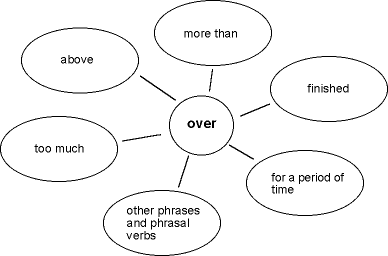Teaching and testing
Much testing goes on informally in classrooms. We might review items taught during the previous session by means of a quick test, for example, or we might do the same via a communication game. There is thus often a very fine line between teaching and testing. For this reason, I have chosen to consider teaching and testing as subsumed within the terms, practising and reviewing, and to discuss them all together in this section. As Brindley (2001: 142) points out, there is increasing attention being given to the area of classroom, as opposed to standardized, testing. Among the methods used by teachers, he cites structured observation, progress grids, learning journals, project work, teacher developed tasks, peer assessment, and self assessment. (See also Module 13, section 13.3.) We noted some self-assessment ideas under the learner training section in 10.5 above (section 10.5.2).
|
Consider the following five rubrics. Which would you think appropriate to teaching and which to testing? Rubric 1: Below is a crossword puzzle and ten clues. Only the clues across are given. Complete the puzzle. Rubric 2: In each of the sentences below, replace the phrase in italics with a phrase including the word, over. Rubric 3: Each of the following eight sentences contains a gap. Supply the missing word in each case. Rubric 4: In each of the five questions below, which of the items is the odd one out? Rubric 5: Write definitions for the words in the boxes. |
Click on 'Commentary' for feedback on this activity.
Rod Ellis has written extensively on second language acquisition (eg Ellis, 1992, 1994). There are several insights relevant to vocabulary learning. Just a few key ones are mentioned here. In terms of practice activities, the role of memory in language acquisition is becoming better understood. In order for our learners to acquire vocabulary, we know that they need to transfer the items from short term into long term memory. The best way for teachers to ensure that this happens is to give learners repeated exposure to the lexical items, by recycling them, as Willis did with 'way' in Section 10.2, section 10.2.1, or by drilling techniques. For a new vocabulary item to pass into short and then long term memory, it is necessary for students to engage with it and preferably to repeat it or use it several times. The simplest type of drill is purely repetition, eg:
'Everybody say this word together …'
but choice questions can be just as effective, eg:
'What about a dog, is it wild or domestic? And a cat? And a sheep?'
A third technique is for the teacher rather than the students to repeat the item, but to promote interaction and student response in the process, eg: 'What date is it today? And what date is it tomorrow?'
Acting out dialogues is another way of achieving repetition, and so is reading aloud, but this should never be done 'cold': students should be given the opportunity to practise in groups or at home first, before being asked to perform in front of a class (see also Module 8, section 8.4.1). Any pair or group activity, whereby students are engaged in analyzing or working out meanings for themselves, generally saves time over teacher-fronted work, although such tasks require teaching skill in setting them up. Communication games can be useful for practising vocabulary, and may involve the whole class in mingling around the classroom and speaking to one another. Other types of communication activities are quieter: Rubric 1, Activity 20, for example, refers to a crossword exercise given to a Russian class. It was done in pairs or groups. For added interest, when completed, No.1 down revealed another common Russian word.
Spidergrams, mindmaps, grids and flow charts are useful visual procedures. They help in brainstorming words and phrases, or in chunking vocabulary items together, so that students can recall them more easily. If you were doing a topic on public transport, for example, you could write the words 'public transport' in the middle of a sheet of paper, give it to groups of learners, and have the groups write down as many words as they could think of within a time limit, making branches in various directions over the paper. Alternatively, you could make a grid with two columns, one 'for' increasing spending on public transport and one 'against' these spending plans, and have students list positive and negative words and phrases. On the same topic, you could invite learners to plan an innovation in public transport for their city, creating a flow chart of the steps in its implementation, using words and phrases you had previously taught for that purpose.
A spidergram was used as a teaching procedure leading up to Rubric 5 in Activity 20, as follows:
|
Step One: Some meanings of over are shown in the diagram below.
|
|
Step Two: Here are some
common phrases with over. Put them into the correct places
on the diagram: Step Three: In each of these sentences, replace the phrases in italics with a phrase with over:
(Adapted from Jillett, 2001: 26) |
